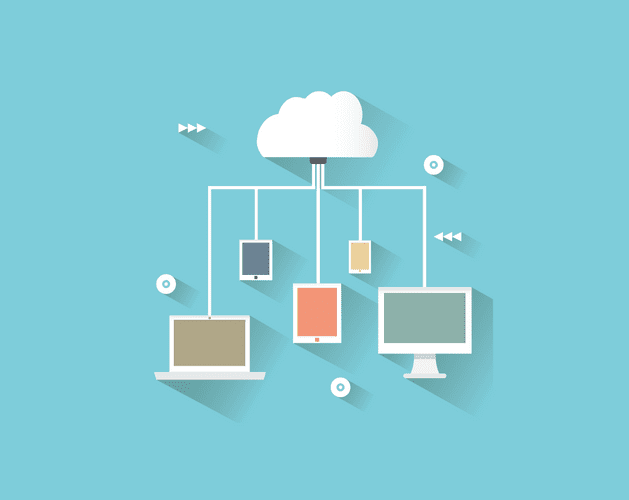The phrase 'hybrid cloud' has been bandied around for almost as long as the C-Word (Cloud, of course – get your mind out of the gutter!) itself. I take it to mean the use of both on-premise (whether in your own server room or in a commercial DC) and public cloud, predominantly of an infrastructure flavour but with a cohesive management across both platforms. This has been quite hard in practice. Many cloud deployments operate separately from their related, on-premise infrastructure and transferring between the two is not a trivial matter.
The future is hybrid and multi-cloud
In the foreseeable future, we believe most organisations will be both hybrid, and multi-cloud, by which we mean that organisations will likely have workloads in more than one Infrastructure or Platform as a service provider. Don't forget, of course, that a significant number of workloads will, over time, be replaced by SaaS. For example, how many of you still run your own Exchange server?
A true hybrid cloud would enable you to:
- Connect workloads you want to remain 'on premise' (i.e. CRM database) with those that make more sense in the 'infinitely scalable' world of cloud (for example, a mobile app that refers to your database).
- Enable you to move workloads back and forth, should you require, with relative ease (perhaps for geographical reasons, to launch in a new country with effectively local infrastructure).
- Enable you to scale your on-premise infrastructure into the cloud at peak times.
This has been a challenge, though, as on-premise and cloud environments have differed in many ways – architecture, availability, governance, latency – if you've tried to do it you will understand!
Changes for the new year
It feels like this is all changing as we progress into 2018. Firstly, Microsoft have released their Azure Stack proposition. This enables you to run 'your own' Azure region on your own hardware in the DC of your choosing, thereby replicating the features and functionality of Azure but under your ownership. The software consumption is on a PAYG basis, and the hardware is your choice - bought, financed or consumed as you desire.
Secondly, VMware have announced their partnership with AWS. This is a replica of the VMware software stack, running on AWS hardware, adjacent to (and, should you wish, connected into), AWS itself. Whilst there are certain pre-requisites (vSphere 6.5, NSX), this makes it easier for 'traditional' workloads to move closer to the cloud, where perhaps more modern apps may be developed.
We're also seeing the emergence of open source providers, who are attempting to replicate the functionality of AWS on-premise – such as StratoScale. I can only see this 'cloud in a box' approach becoming more prevalent. I doubt it will challenge existing infrastructure for existing applications, but for development, application modernisation, and brand new (Cloud Native) apps it could well be the way forward in some scenarios.
HPE have joined the fray, as well, this week, with the announcement of OneSphere – hitherto known as 'NewStack'. This is not another cloud platform, rather a SaaS-delivered management layer for managing public clouds and on-premise infrastructure, providing a unified view across all of the above and making it easier for businesses to consume the appropriate service.
Cloud choices abound
It's impossible to tell you which approach will come out on top – in fact, it's likely each of them will be relevant in different scenarios. What's important, however, is that you will shortly have several choices of how you deploy hybrid cloud, and it will be a whole lot easier than it has been. The on-prem and cloud platforms will now be running the same code! Of course, there's still connectivity, security, and many other things to consider.
Contact us
If you need help with your hybrid IT strategy, or want to take a look at any of the technologies outlined above, get in touch with your Softcat account manager and ask for a conversation with one of our cloud technologists.

